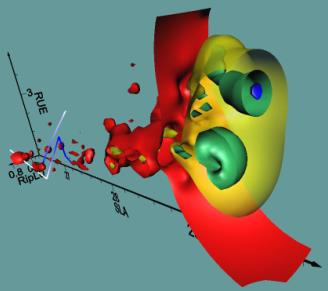Comparison of sensitivity analysis techniques: a case study with the rice model WARM.
 |
2010 - Ecological Modelling, 221, 1897-1906 |
 |
Confalonieri, R., Bellocchi, G., Bregaglio, S., Donatelli, M., Acutis, M. |
Abstract:
The considerable complexity often included in biophysical models leads to the need of specifying a large number of parameters and inputs, which are available with various levels of uncertainty. Also, models may behave counter-intuitively, particularly when there are nonlinearities in multiple input–output relationships. Quantitative knowledge of the sensitivity of models to changes in their parameters is hence a prerequisite for operational use of models. This can be achieved using sensitivity analysis (SA) via methods which differ for specific characteristics, including computational resources required to perform the analysis. Running SA on biophysical models across several contexts requires flexible and computationally efficient SA approaches, which must be able to account also for possible interactions among parameters. A number of SA experiments were performed on a crop model for the simulation of rice growth (Water Accounting Rice Model, WARM) in Northern Italy. SAs were carried out using the Morris method, three regression-based methods (Latin hypercube sampling, random and Quasi-Random, LpTau), and two methods based on variance decomposition: Extended Fourier Amplitude Sensitivity Test (E-FAST) and Sobol’, with the latter adopted as benchmark. Aboveground biomass at physiological maturity was selected as reference output to facilitate the comparison of alternative SA methods. Rankings of crop parameters (from the most to the least relevant) were generated according to sensitivity experiments using different SA methods and alternate parameterizations for each method, and calculating the top-down coefficient of concordance (TDCC) as measure of agreement between rankings. With few exceptions, significant TDCC values were obtained both for different parameterizations within each
method and for the comparison of each method to the Sobol’ one. The substantial stability observed in the rankings seem to indicate that, for a crop model of average complexity such as WARM, resource intensive SA methods could not be needed to identify most relevant parameters. In fact, the simplest among the SA methods used (i.e., Morris method) produced results comparable to those obtained by methods more computationally expensive.
method and for the comparison of each method to the Sobol’ one. The substantial stability observed in the rankings seem to indicate that, for a crop model of average complexity such as WARM, resource intensive SA methods could not be needed to identify most relevant parameters. In fact, the simplest among the SA methods used (i.e., Morris method) produced results comparable to those obtained by methods more computationally expensive.
 |
Keywords: Morris method, Latin hypercube, Quasi-Random LpTau, Sobol', FAST, Fourier Amplitude Sensitivity Test |
 |
DOI: 10.1016/j.ecolmodel.2010.04.021 |
- Comparison of three calibration methods for modeling rice phenology
- A simple pipeline for the assessment of legacy soil datasets: An example and test with soil organic carbon from a highly variable area.
- A high-resolution, integrated system for rice yield forecasting at district level.
- Downscaling rice yield simulation at sub-field scale using remotely sensed LAI data.
- Analysis and modelling of processes involved with salt tolerance and rice.
- Estimating crop nutritional status using smart apps to support nitrogen fertilization. A case study on paddy rice.
- Development of generic crop models for simulation of multi-species plant communities in mown grasslands.
- Quantifying uncertainty due to stochastic weather generators in climate change impact studies
- Predicting rice blast disease: machine learning versus process-based models
- Boundaries and perspectives from a multi-model study on rice grain quality in Northern Italy.




